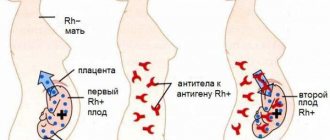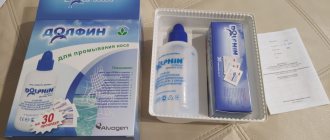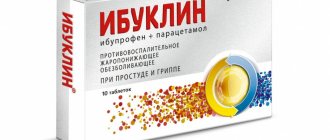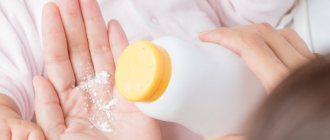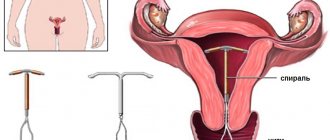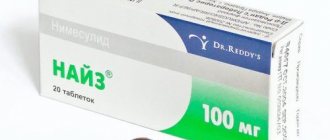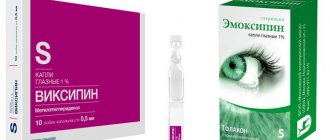The baby's body consists of many systems that perform different functions. One of the main systems of the body is the respiratory system. The respiratory organs perform the main function - external respiration. External respiration is the exchange of gases between the surrounding air and the lungs. The breathing process is realized through the upper, middle and lower respiratory organs. The upper ones include: nose and pharynx. Middle: larynx, trachea, bronchi. The lower respiratory organs are represented by bronchioles and alveoli. Consideration of this topic requires an understanding of the structure of the nose in young children. Let's take a closer look at this point.
The baby's nose is quite small. The nasal passages are very narrow. The nasal mucosa is very delicate and vulnerable. It contains a large number of blood vessels. Considering the above, even minor inflammation of the mucous membrane leads to severe difficulty breathing. It is also worth noting that children during the first six months cannot breathe through their mouth. This is due to the relatively large size of the tongue, which pushes the epiglottis posteriorly.
Inflammation of the nasal mucosa has a medical term - rhinitis . As a rule, rhinitis is accompanied by congestion and runny nose. Frequent sneezing often occurs. Rhinitis can be caused by various factors. One of the most likely causes of a runny nose in children is allergies and viral infections. In this case, allergies may mean allergic rhinitis. There are two types: seasonal and year-round. Seasonal rhinitis is associated with the flowering of certain plant species and their pollen. Year-round is associated with constant contact with the allergen. As a rule, house dust acts as a causative factor for year-round rhinitis. In addition to allergies, children, especially in the autumn-winter period, often experience acute respiratory viral infections. One of the most common symptoms of ARVI is a runny nose. One way or another, any respiratory viral infection can be accompanied by rhinitis. But the development of rhinitis and rhinovirus infection is more typical. You can find out more about the causes, symptoms, and methods of treating this pathology in our article. In this article, we will pay much attention to secondary ways to combat a runny nose - nasal aspirators for newborns and young children.
Rhinitis can be caused by various factors, and some of the most likely causes of a runny nose in children are allergies and viral infections.
Nosological classification (ICD-10)
- J00 Acute nasopharyngitis [runny nose]
- J01 Acute sinusitis
- J01.9 Acute sinusitis, unspecified
- J06 Acute upper respiratory tract infections of multiple and unspecified localization
- J30 Vasomotor and allergic rhinitis
- J31 Chronic rhinitis, nasopharyngitis and pharyngitis
- J31.0 Chronic rhinitis
- J32 Chronic sinusitis
- J34.8 Other specified diseases of the nose and nasal sinuses
- J35 Chronic diseases of the tonsils and adenoids
- J35.2 Adenoid hypertrophy
- Z29.8 Other specified preventive measures
- Z98.8 Other specified postsurgical conditions
Contraindications for using an aspirator
Contraindications to the use of this device in children are:
- Injuries and damage to the nasal mucosa.
- Frequent nosebleeds.
- Features of the structure of the nasal passages and nasal septum (for example, narrow nasal passages).
- No tip stop.
In other cases, using an aspirator when a child has a runny nose is not only possible, but also necessary.
Every parent sooner or later faces such a problem as a runny nose in a child. It is very important to understand that a runny nose is a symptom of a disease. In addition to the main treatment prescribed by the doctor, it is often necessary to use secondary means and devices. When you have a runny nose, an aspirator is an indispensable tool. As described above, there are different types. Preference is given to mechanical (including syringes) and electronic. Electronic ones are the best aspirators for newborns. The only downside is their rather high cost. Do not self-medicate; if your child has a runny nose, consult a doctor.
Compound
Aqualor® baby Means for irrigation and rinsing of the nasal cavity for children
Aqualor® soft mini Means for irrigating and rinsing the nasal cavity for children and adults
Aqualor® soft Means for irrigation and rinsing of the nasal cavity for children and adults
Aqualor® norms Means for irrigation and rinsing of the nasal cavity for children and adults
| Aerosol | 100 ml |
| natural sea water - 30–33 ml; purified water - up to 100 ml | |
| indicators: NaCl content - 8–11 g/l; pH - 6–8.5 |
Rating of the best aspirators for newborns
Parents often ask the following questions: “Which is the best and safest nasal aspirator for newborns? How to use a nasal aspirator? How to choose an aspirator for newborns? Below we present to your attention some of the best representatives of various types of these devices.
It is important to choose the right aspirator for your child.
Syringes
Among this type it is worth highlighting:
- Chicco.
- Farlin BF-138. Made from hypoallergenic material. The kit comes with different sizes of nozzles. Thanks to the device, when you press the bulb again, the mucus does not get back into the nose.
- Alpina Plast.
Mechanical
On pharmacy shelves you can find aspirators such as:
- Canpol.
- Aqualor Baby.
- Aqua Maris.
- Pigeon with drain tube.
- Marimer.
- Otrivin Baby.
Electronic
The most popular among them are:
- B.Well WC-150.
- Coclean New.
- Cleanoz.
Vacuum
Among vacuum devices, special attention is paid to the Baby-Vac aspirator. As mentioned earlier, the disadvantage is the noise during use.
Recommended
Prevention and complex treatment of acute and chronic inflammatory diseases of the nasal cavity, paranasal sinuses and nasopharynx (infectious, allergic, atrophic):
- acute and chronic rhinitis (runny nose);
- acute and chronic sinusitis, incl. sinusitis;
- acute and chronic adenoiditis;
- allergic and vasomotor rhinitis;
— subatrophic rhinitis (dry mucous membrane).
Prevention and comprehensive treatment of respiratory infections (including ARVI).
Daily hygiene of the nasal cavity and nasopharynx.
Condition after surgical interventions in the nasal cavity and paranasal sinuses.
Aqualor baby spray 125ml
Name
Aqualor baby spray 125ml
Description
A product for irrigation and rinsing of the nasal cavity for children and adults “Aqualor Baby” 125 ml is an aerosol in a metal container with an anatomical nozzle for the nose and a plastic cap. The contents of the container are a transparent, colorless, odorless liquid with a slightly salty taste, which is a sterile solution of sea water with an isotonic concentration of NaCl. Does not contain preservatives. Not a medicine. *The Aqualor Baby nozzle is equipped with a restrictive ring that prevents deep penetration and trauma to the child’s nasal mucosa.
Main active ingredient
Release form
Spray
Dosage
135 ml.
Indications for use
Prevention and complex treatment of acute and chronic inflammatory diseases of the nasal cavity, paranasal sinuses and nasopharynx (infectious, allergic, atrophic): acute and chronic rhinitis (runny nose), acute and chronic sinusitis (including sinusitis), acute and chronic allergic and vasomotor adenoiditis rhinitis subatrophic rhinitis (dry mucous membrane) Prevention and complex treatment of respiratory infections (ARVI, etc.) Daily hygiene of the nasal cavity and nasopharynx Condition after surgical interventions in the nasal cavity and paranasal sinuses Means for irrigation and rinsing of the nasal cavity for children and adults “Aqualor baby” » used for the prevention and complex treatment of acute and chronic inflammatory diseases of the nasal cavity, paranasal sinuses and nasopharynx (infectious, allergic, atrophic), conditions after surgical interventions in the nasal cavity and paranasal sinuses, during the onset of colds, as well as for daily hygiene of the cavity nose and nasopharynx. Designed to remove mucus, reduce secretions, soften and remove crusts, and moisturize the nasal mucosa. It has a beneficial effect on the mucous membrane of the nasal cavity and nasopharynx, helps reduce nasal congestion and restore nasal breathing. After rinsing the nasal cavity with Aqualor Baby, a means for irrigation and rinsing the nasal cavity for children and adults, the therapeutic effectiveness of drugs applied to the mucous membrane of the nasal cavity increases, the duration of respiratory diseases is reduced, and the risk of infection spreading into the paranasal sinuses and ear cavity is reduced. Conditions of use: for individual use and in medical institutions. Contraindications: individual intolerance to the components of the balloon contents.
Directions for use and doses
For children under 2 years old. Rinsing the nose of a young child is carried out in a lying position: turn the child’s head to the side; insert the tip of the balloon into the nasal passage located on top and rinse the nasal cavity for several seconds; remove the remaining washing liquid using an aspirator, repeat the procedure if necessary. Carry out the procedure with the other nasal passage. For children over 2 years old and adults: tilt your head to one side; insert the tip of the balloon into the nasal passage located on top and rinse the nasal cavity for several seconds; remove the remaining rinsing liquid using a child’s aspirator/blow his nose, repeat the procedure if necessary. Carry out the procedure with the other nasal passage. Instructions for sanitary treatment: before using the medical device, treat the anatomical attachment with boiling water or a solution of ethyl alcohol.
Storage conditions
store in a dry place away from direct sunlight at a temperature of 5 °C to 25 °C. Keep out of the reach of children.
Buy Aqualor baby spray 125ml in a pharmacy
Price for Aqualor baby spray 125ml
Instructions for use for Aqualor baby spray 125ml
Directions for use and doses
Intranasally.
Table 1
| product name | Age for use | Spray nature |
| Aqualor® baby * | From birth | Soft shower |
| Aqualor® soft, Aqualor® soft mini | From 6 months | Shower |
| Aqualor® norm | From 6 months | Jet |
* the Aqualor® baby nozzle is equipped with a restrictive ring that prevents deep penetration and trauma to the baby’s nasal mucosa.
Adults and children over 2 years old
1. Tilt your head to the side.
2. Insert the tip of the balloon into the nasal passage located above.
3. Rinse the nasal cavity for a few seconds.
4. Remove any remaining rinsing fluid using a child’s aspirator/blow his nose.
If necessary, repeat the procedure. Carry out the procedure with the other nasal passage.
Children under 2 years old
1. While lying down, turn the child’s head to the side.
2. Insert the tip of the balloon into the nasal passage located above.
3. Rinse the nasal cavity for several seconds.
4. Remove any remaining washing liquid using an aspirator.
If necessary, repeat the procedure. Carry out the procedure with the other nasal passage.
What is an aspirator?
A nasal aspirator (nasal aspirator) is a device for removing excess mucus from the nose, which allows you to restore the patency of the nasal passages and thereby restore breathing through the nose.
Aspirators for children come in various designs, differ in manufacturer and price category, but they have the same operating principle - suctioning mucus from the nose.
Below we will consider the different types of these devices and the principles of their operation.
Release form
Aqualor® baby Means for irrigation and rinsing of the nasal cavity for children
Aerosol. In a pressurized metal container with an anatomical nose piece and a plastic cap, 125 ml. A four-layer bag with contents is placed inside the cylinder, equipped with a special one-way valve, which maintains the sterility of the contents throughout the entire period of use by preventing backflow of the contents and preventing ambient air from entering the bag. 1 cylinder in a cardboard box.
Aqualor® soft mini Means for irrigation and rinsing of the nasal cavity for children and adults
Aerosol. In a pressurized metal bottle with an anatomical nose piece and a plastic cap, 50 ml. A four-layer bag with contents is placed inside the cylinder, equipped with a special one-way valve, which maintains the sterility of the contents throughout the entire period of use by preventing backflow of the contents and preventing ambient air from entering the bag. 1 cylinder in a cardboard box.
Aqualor® soft Means for irrigation and rinsing of the nasal cavity for children and adults
Aerosol. In a pressurized metal container with an anatomical nose piece and a plastic cap, 125 ml. A four-layer bag with contents is placed inside the cylinder, equipped with a special one-way valve, which maintains the sterility of the contents throughout the entire period of use by preventing backflow of the contents and preventing ambient air from entering the bag. 1 cylinder in a cardboard box.
Aqualor® norms Means for irrigation and rinsing of the nasal cavity for children and adults
Aerosol. In a pressurized metal container with an anatomical nose piece and a plastic cap, 125 ml. A four-layer bag with contents is placed inside the cylinder, equipped with a special one-way valve, which maintains the sterility of the contents throughout the entire period of use by preventing backflow of the contents and preventing ambient air from entering the bag. 1 cylinder in a cardboard box.
Types of nasal aspirators for newborns and young children
There are the following types of nasal aspirators:
- Syringes . They are a fairly simple device. They consist of two main parts: a soft rubber bulb and a silicone nose tip. Some of them have a stopper that will prevent the tip from going deeper. The simplicity of the design makes it easy to disassemble, wash and process its components. The operating principle is simple. Pressing the bulb causes a vacuum to appear when inserted into the nose, which facilitates suction of the contents.
One of the simplest methods of aspiration is a syringe.
- Mechanical . Mechanical devices consist of the following parts: a tube and a snot reservoir. Replaceable filters are also available. The principle of operation of this device is to insert the tip into the nostril and sip air towards yourself. The filter prevents the mucous contents of a child's nose from entering the adult's mouth.
- Electrical . These devices are the most effective. The downside is their high cost compared to other types of aspirators. Using this device is even easier. To remove snot, you need to insert a soft tip into the nasal passage and press the button on the device
- Vacuum . They are also quite an effective device. What's unusual is that it needs to be connected to a vacuum cleaner to use it. This device is not popular among pediatricians. This can be explained by the fact that when used, the vacuum cleaner is large and noisy, which frightens children.
The most popular among all types are syringes and mechanical nasal aspirators. But it is worth noting that electronic ones are in no way inferior to mechanical ones. Preference is given to mechanical ones solely for financial reasons.
